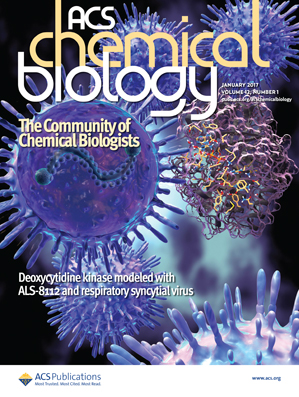Assessment of Macrovascular Invasion in Advanced Hepatocellular Carcinoma: Clinical Implications and Treatment Outcomes with Systemic Therapy
IF 3.5
2区 生物学
Q2 BIOCHEMISTRY & MOLECULAR BIOLOGY
引用次数: 0
Abstract
Introduction: Macrovascular invasion (MVI) is a strong prognostic factor for advanced hepatocellular carcinoma (HCC). The current criteria for radiological assessment are unclear in evaluating the impact of MVI on systemic therapy. In this study, we standardized the assessment of MVI and validated its clinical relevance. Methods: Clinical data were collected from patients with advanced HCC and MVI who received first-line systemic therapy at four medical centers in Japan. First, we used macrovascular invasion progression disease (MVI-PD) to track MVI progression, and Response Evaluation Criteria in Solid Tumours version 1.1 progression disease (RECIST v1.1-PD) to evaluate tumor enlargement other than MVI and the appearance of new lesions. Next, we assessed the prognostic value of MVI-PD and RECIST v1.1-PD. Results: Of the 207 advanced HCC patients with MVI, 189 received appropriate imaging evaluation. 40 (21.2%) patients had MVI-PD and RECIST v1.1-PD, 51 (27.0%) had prior MVI-PD, and 61 (32.3%) had prior RECIST v1.1-PD. In a landmark analysis, the prognosis of 163 patients who survived more than three months was analyzed based on the assessment of imaging response during the first three months. The median overall survival (OS) was 5.4 months in those who had MVI-PD and RECIST v1.1-PD, 7.4 months in those who had RECIST v1.1-PD only, 7.2 months in those who had MVI-PD only, and 19.7 months in patients who had neither (p<0.001). The correlation coefficients between progression-free survival and OS in patients with appropriate imaging assessments were similar for MVI-PD (0.515) and RECIST v1.1-PD (0.498). Conclusion: Our findings demonstrate the link between MVI progression and poor OS in systemic therapy for advanced HCC, emphasizing the importance of an accurate method for assessing MVI progression.评估晚期肝细胞癌的大血管侵犯:系统疗法的临床意义和治疗效果
导言:大血管侵犯(MVI)是晚期肝细胞癌(HCC)的一个重要预后因素。在评估 MVI 对全身治疗的影响方面,目前的放射学评估标准尚不明确。在本研究中,我们对 MVI 的评估进行了标准化,并验证了其临床相关性。方法收集了在日本四家医疗中心接受一线系统治疗的晚期 HCC 和 MVI 患者的临床数据。首先,我们用大血管侵犯进展病(MVI-PD)来追踪 MVI 进展,用实体瘤反应评估标准 1.1 版进展病(RECIST v1.1-PD)来评估 MVI 以外的肿瘤增大和新病灶的出现。接下来,我们评估了 MVI-PD 和 RECIST v1.1-PD 的预后价值:结果:在207例患有MVI的晚期HCC患者中,189例接受了适当的影像学评估。40例(21.2%)患者曾接受过MVI-PD和RECIST v1.1-PD检查,51例(27.0%)患者曾接受过MVI-PD检查,61例(32.3%)患者曾接受过RECIST v1.1-PD检查。在一项具有里程碑意义的分析中,根据前三个月的影像反应评估结果,对存活超过三个月的163名患者的预后进行了分析。MVI-PD和RECIST v1.1-PD患者的中位总生存期(OS)为5.4个月,仅有RECIST v1.1-PD的患者为7.4个月,仅有MVI-PD的患者为7.2个月,两者都没有的患者为19.7个月(P<0.001)。MVI-PD(0.515)和RECIST v1.1-PD(0.498)患者的无进展生存期和OS之间的相关系数相似:我们的研究结果表明,在晚期HCC的全身治疗中,MVI进展与不良OS之间存在联系,强调了准确评估MVI进展方法的重要性。
本文章由计算机程序翻译,如有差异,请以英文原文为准。
求助全文
约1分钟内获得全文
求助全文
来源期刊

ACS Chemical Biology
生物-生化与分子生物学
CiteScore
7.50
自引率
5.00%
发文量
353
审稿时长
3.3 months
期刊介绍:
ACS Chemical Biology provides an international forum for the rapid communication of research that broadly embraces the interface between chemistry and biology.
The journal also serves as a forum to facilitate the communication between biologists and chemists that will translate into new research opportunities and discoveries. Results will be published in which molecular reasoning has been used to probe questions through in vitro investigations, cell biological methods, or organismic studies.
We welcome mechanistic studies on proteins, nucleic acids, sugars, lipids, and nonbiological polymers. The journal serves a large scientific community, exploring cellular function from both chemical and biological perspectives. It is understood that submitted work is based upon original results and has not been published previously.
 求助内容:
求助内容: 应助结果提醒方式:
应助结果提醒方式:


